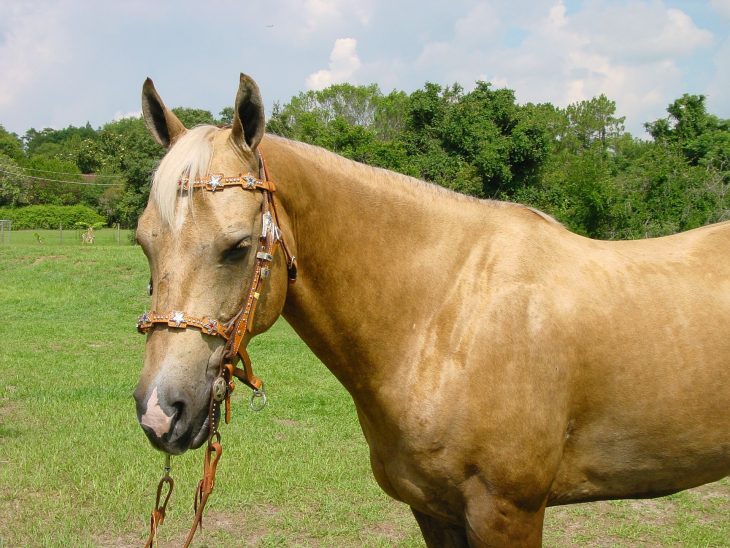
Despite their many uses in manual labor, horses have also symbolized the elite throughout time. Until now, horseback riding sits in the same league as golf in terms of the rich’s hobby of choice. Of all variations, the Palomino horse serves as one of the lasting examples of the aristocrat’s liking towards equestrians. From the golden coat itself, Palominos have a long history rooted in royalty and luxury. Take a closer look at these majestic animals with these Palomino horse facts.
- Palomino describes a color variety – it’s not an actual horse breed.
- The average palomino horse stands from 14 to 17 hands tall.
- Palomino horses weigh an average of 566.99 kg.
- A palomino horse typically lives for 20-30 years.
- The Palomino Horse Breeders of America recognizes only 5 horse breeds for Palomino variants.
- The name palomino comes from Spanish origin.
- Palomino horses have coats in golden tones.
- In contrast to its coat, a palomino horse’s skin usually comes in gray, black, brown or pink.
- Palomino horses’ eyes usually come in black, hazel, or brown.
- It’s widely believed that palomino horses descended from the Arabian horse.
- To be classified as a palomino, a horse’s mane and tail must be white with less than 15% of other shades.
- The palomino’s coloring is caused by the cream gene.
- Daily grooming is recommended to maintain the Palomino’s coat.
- It’s believed that Palominos existed as early as the first horses appeared.
- Palominos take after the temperament of their breed.
- Around 50% of all Palominos are Quarter Horses.
- Breeding a cremello with a chestnut-coated horse has a 100% success rate for creating a Palomino horse.
- The palomino horse’s light coat may suggest that it came from the desert.
- Meanwhile, breeding two Palominos together only has a 50% success rate of producing another Palomino.
- A Palomino’s distinct coat closely resembles a shiny gold coin.
Palomino Horse Facts Infographics
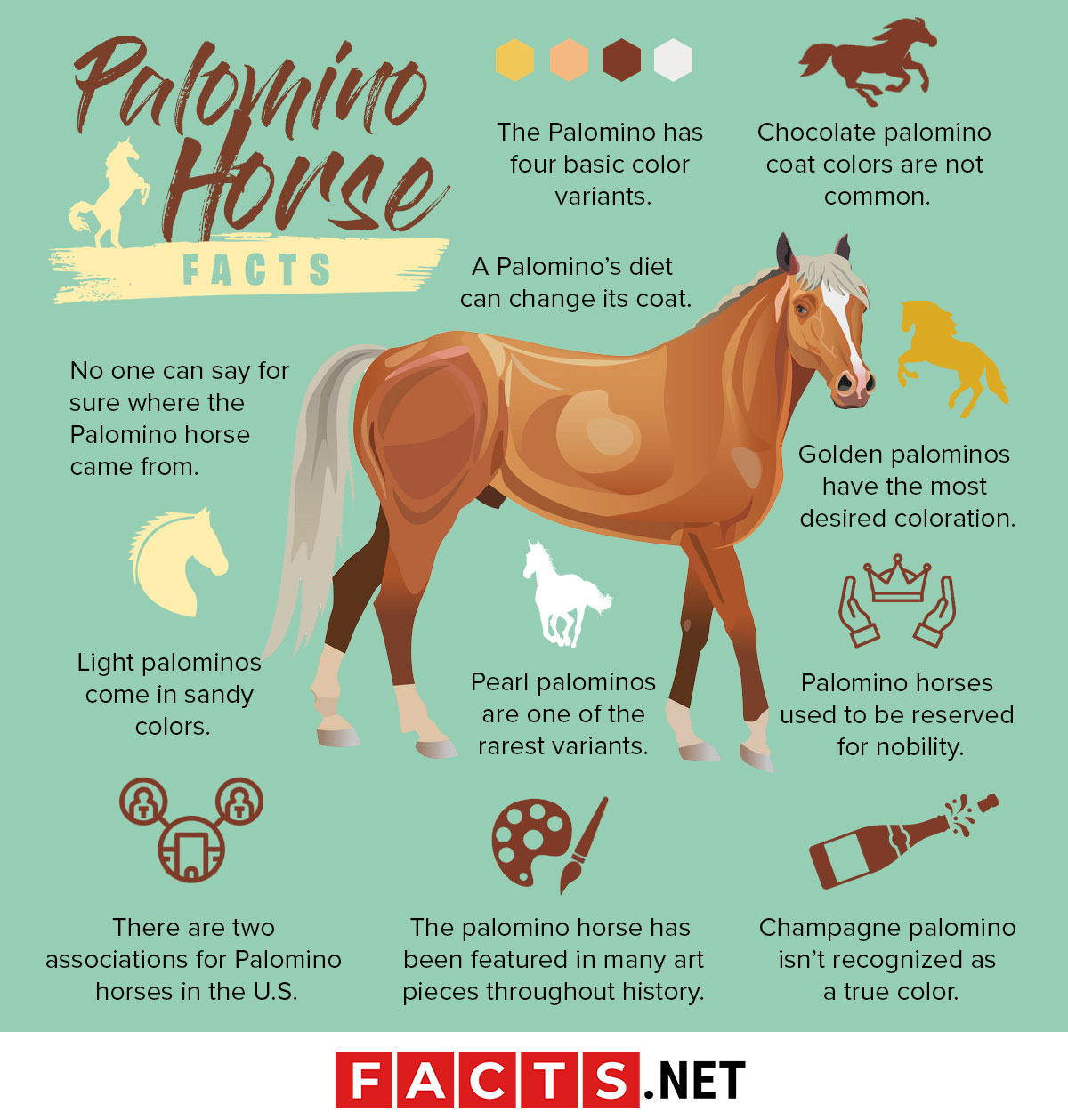
No one can say for sure where the Palomino horse came from.
Today, Palomino horses can be produced from many breeds such as the Thoroughbred, Quarter Horse, and Morgan. However, despite how common they are now, no one has pinpointed exactly when horses developed the Palomino coloration.
According to scientists, Palominos may have existed at the same time as the very first horses. Meanwhile, some theorize that the Palomino horse came significantly later when horses evolved in the deserts of the Middle East.
Although unconfirmed, the second theory generally holds more weight. Based on the horse’s coat, scientists believe that horses adopted the Palomino color to blend in with the desert sands as camouflage from predators.
The palomino horse has been featured in many art pieces throughout history.
As the literal Golden Boys of the equestrian world, the Palomino horse’s buttery coat has been admired and revered throughout history. In fact, man’s enchantment with Palominos have made them the subject of many artistic and literary works.
Perhaps the most iconic of these Palomino-inspired pieces is Sandro Botticelli’s 1481 painting, The Adoration of the Magi. Aside from the Italian painter’s work, the Palomino horse has also been depicted in many recovered artifacts from the ancient cities of Rome, Greece, Persia, Mongolia, China, and Japan.
Golden palominos have the most desired coloration.
Golden palominos owe their name to their coats that resemble the sheen of a gold coin with a white mane and tail. Generally, this color has been recognized as the ideal coat for palominos.
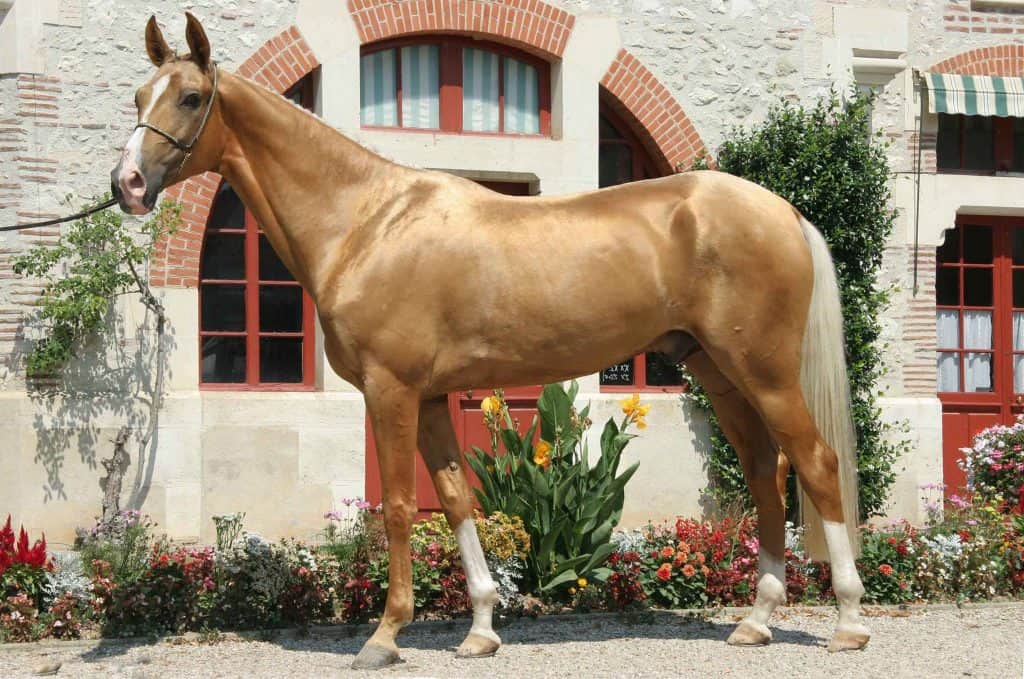
A Palomino’s diet can change its coat.
The primary factor for a Palomino’s coat’s color is their diet. Generally speaking, high-protein feed tends to make their coats darker. Like most animals, Palominos can also shift colors according to the seasons.
From winter to summer, their coats can change so much that it would look like two different horses to the untrained eye.
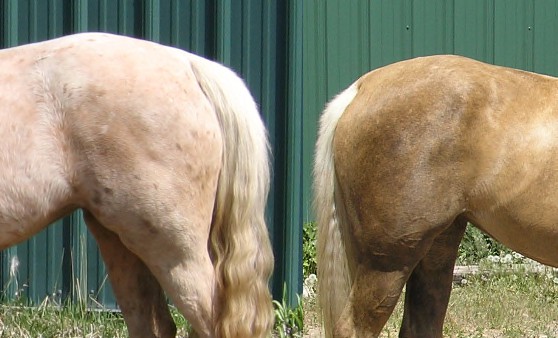
Palomino horses used to be reserved for nobility.
Of all historical figures, Queen Isabella of Spain may have pioneered the Palomino’s reputation with the elite. Reportedly keeping over a hundred Palominos at her residence, the queen forbade commoners from owning them.
Instead, she only allowed the royal family and favored nobles to ride them.
The Palomino has four basic color variants.
The general rule of thumb for Palomino coloration is dark skin, a predominantly white mane and tail, and the much-desired golden tone.
However, a few variations exist aside from the regular gold, which are: the light Palomino, chocolate palomino, and pearl palomino.
There are two associations for Palomino horses in the U.S.
In the U.S., two associations govern the community of palomino horses, namely: the Palomino Horse Association (PHA) and the Palomino Horse Breeders of America (PHBA).
Both associations regulate the guidelines for registering, breeding, and caring for palominos, but it’s generally believed that the PHBA has stricter qualifications.
Chocolate palomino coat colors are not common.
True to its namesake, the chocolate Palomino has a significantly darker coat reminiscent of cocoa, with a white mane and tail. Most of the time, chocolate palominos have a few black or brown hairs in their manes or tails.
You can produce a chocolate palomino from breeding a palomino with a liver chestnut. Although it doesn’t really look golden anymore, it still classifies as a Palomino for the cream dilution gene found in all Palominos.
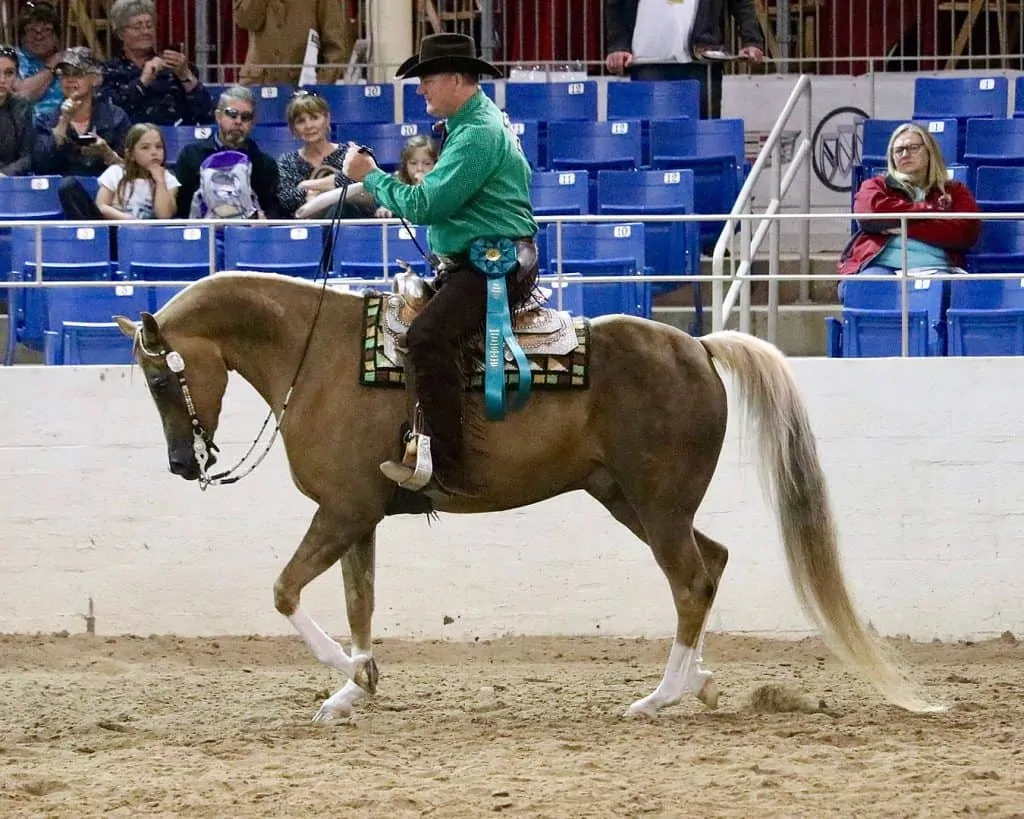
Light palominos come in sandy colors.
With a coat so light that it lacks the characteristic Palomino sheen, one could easily classify light palominos as other kinds of horses. However, these horses still have the distinctly dark skin color as well as the singular cream gene of Palominos.
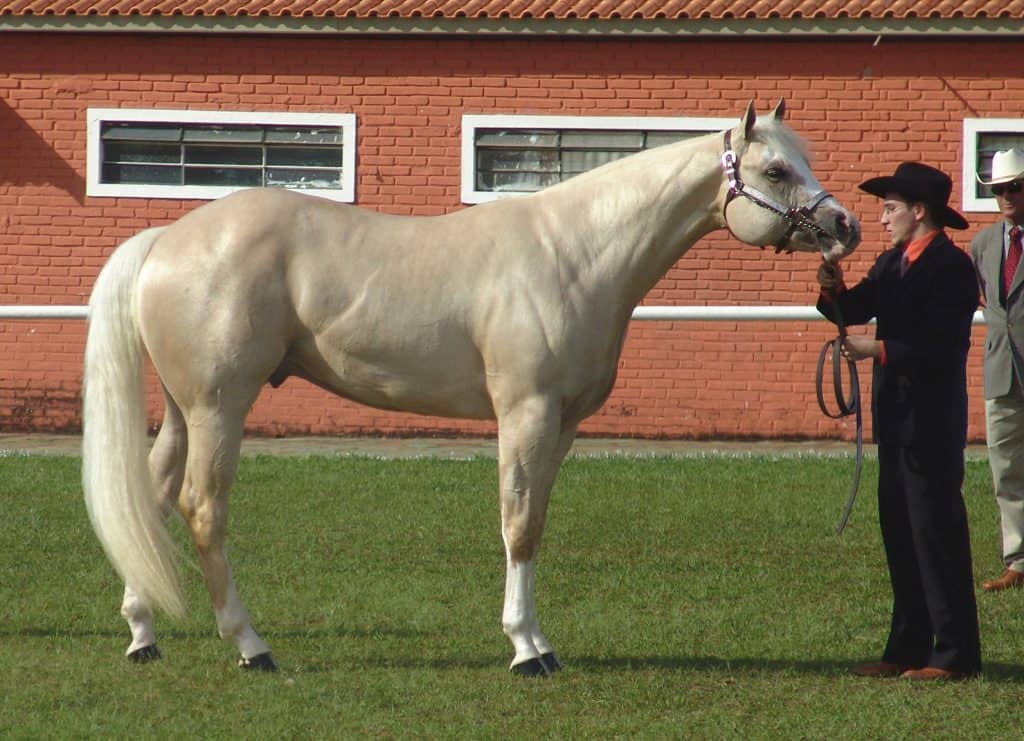
Champagne palomino isn’t recognized as a true color.
Due to their similar appearance, some may confuse a gold chestnut with a palomino. However, they only share surface-level similarities. One of the ways you can tell them apart is by their skin color. A palomino would have brown skin, while a gold chestnut would have pink skin.
Another way to compare these horses is by their eyes. Palominos generally have brown eyes, while all gold chestnuts have sky blue eyes.
On a much deeper level, it all comes down to their genetics. Some chestnuts develop a golden coat due to the champagne gene dilution. Their subsequent lack of the cream gene dilution is what keeps these horses from being recognized as true Palominos.
Pearl palominos are one of the rarest variants.
A pearl palomino’s coat is characterized by a light cream tone with a lustrous sheen. More interestingly, pearl palomino’s usually have green or blue eyes instead of the usual brown. To produce a pearl palomino, breeding with an Andalusian or Lusitano has the best success rate.
Was this page helpful?
Our commitment to delivering trustworthy and engaging content is at the heart of what we do. Each fact on our site is contributed by real users like you, bringing a wealth of diverse insights and information. To ensure the highest standards of accuracy and reliability, our dedicated editors meticulously review each submission. This process guarantees that the facts we share are not only fascinating but also credible. Trust in our commitment to quality and authenticity as you explore and learn with us.


